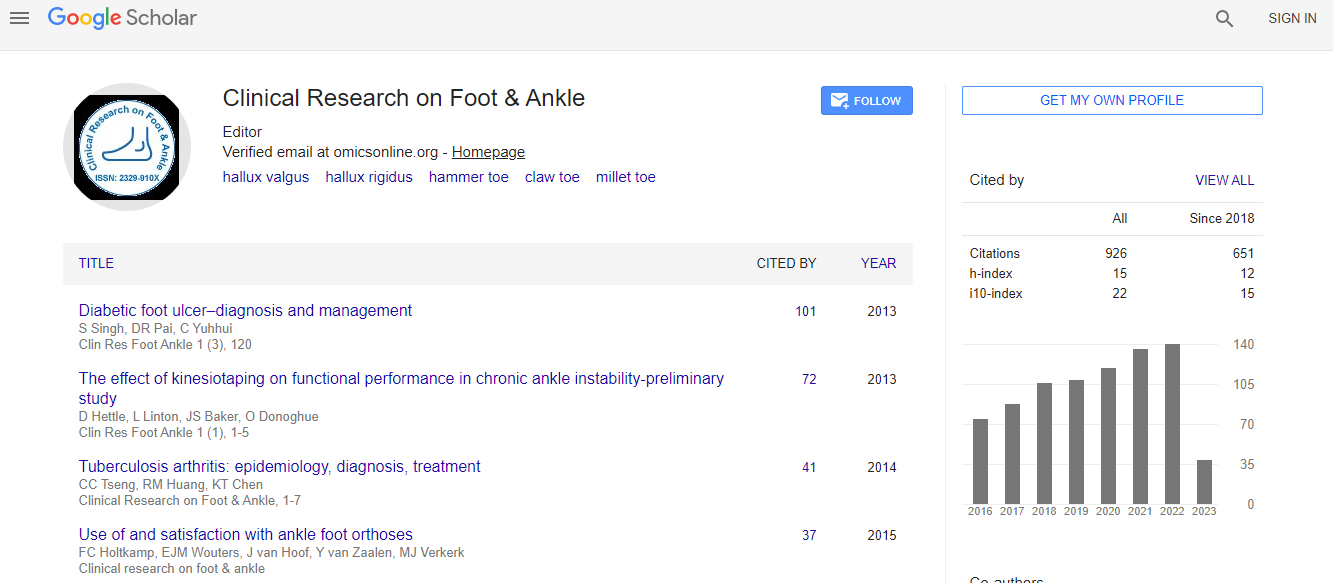Review Article
Laser Therapy for the Treatment of Onychomycosis: Best Evidence Based Practice or Not?
Nadia Dembskey and Heidi Abrahamse*
Laser Research Centre, Faculty of Health Sciences, University of Johannesburg, South Africa
- Corresponding Author:
- Heidi Abrahamse
Laser Research Centre, Faculty of Health Sciences
University of Johannesburg, P.O. Box 17011
Doornfontein, 2028, South Africa
Tel: +27 (11) 559-6550
Fax: +27 (11) 559-6884
E-mail: habrahamse@uj.ac.za
Received Date: June 30, 2016; Accepted Date: October 20, 2016; Published Date: October 24, 2016
Citation: Dembskey N, Abrahamse H (2016) Laser Therapy for the Treatment of Onychomycosis: Best Evidence Based Practice or Not?. Clin Res Foot Ankle 4:211. doi:10.4172/2329-910X.1000211
Copyright: © 2016 Dembskey N, et al. This is an open-access article distributed under the terms of the Creative Commons Attribution License, which permits unrestricted use, distribution, and reproduction in any medium, provided the original author and source are credited.
Abstract
Onychomycosis is a very common condition that accounts for 50% of all nail pathologies. Currently 2–5% of the world population suffers from this disorder. It is primarily caused by dermatophytes, but the infection can also be caused by yeasts and non-dermatophyte moulds. Onychomycosis is a therapeutic challenge and recently there has been an increase in resistance to oral and topical antifungal agents, leading to 20-25% relapse and/or reinfection rate. During the past 5 years, the emergence of laser therapy has been the topic of discussion as a newer, safer modality of treatment.
Nail clippings and scrapings are the most common methods of sampling for suspected onychomycosis. The simplest method for detecting fungi is by way of 20% potassium hydroxide (KOH) preparations, but lately show insufficient sensitivity in onychomycosis – as much as 40–68%. Fungi can also be grown in culture form; however a 70% sensitivity detection failure rate is seen. Recently, histological fungal detection – in the form of Periodic Acid- Schiff (PAS) stain – has shown high sensitivity at 92% in the detection of fungal elements.
The exact mechanism of action of laser is unknown but it is believed that heat disintegrates fungal structures. One of the most appealing characteristics of laser therapy is its ability to deliver energy to the target tissue and avoid systemic side effects at the same time. In 2009 the United Kingdom (UK) Podiatry magazine Podiatry Now published a letter suggesting laser treatment was “possibly the most radical development in the treatment of onychomycosis our profession has ever seen”, although concerns were raised over the unproven efficacy and investment costs involved.
Papers have been published investigating the efficacy of lasers for the treatment of onychomycosis. Even though laser therapy provides an alternative option with rapid procedure duration, conflicting evidence is shown in a variety of papers and studies with longer follow-up periods suggest onychomycosis relapse in those treated with laser, which warrants further investigation.

 Spanish
Spanish  Chinese
Chinese  Russian
Russian  German
German  French
French  Japanese
Japanese  Portuguese
Portuguese  Hindi
Hindi 
